
views
Creating the Correct Growing Conditions

Keep temperatures between 65 to 75 °F (18 to 24 °C). This plant originates from the tropics, so temperatures need to be kept consistently warm for the tree to survive. The temperature can drop below 50 °F (10 °C) for short amounts of time, but try to avoid exposing it to regular drops in temperature lower than 50 °F (10 °C). Ficus benjamina can be grown in USDA hardiness zones 9 and above. A ficus can be grown outdoors as long as there is no risk of frost in your climate.

Provide indirect sunlight for your ficus. Don't keep your ficus next to a window, door, air vent, or radiator, or else it will go through drastic temperature changes. An area with bright, indirect sunlight is the best place to keep a ficus. Ficuses do not tolerate being moved once they have settled in a location. Even a slight change in the climate or location can cause leaves to drop.
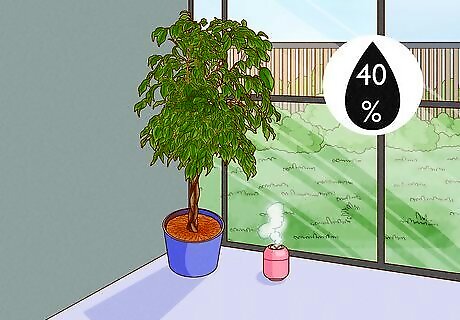
Maintain the area at a humidity above 40 percent. Humidity is just as important as temperature and light for a ficus. If the humidity falls below 40 percent, the tree will drop leaves. To maintain humidity, place a saucer with ⁄8 inch (3.2 mm) of room temperature water underneath the ficus's pot. The water will evaporate and increase the humidity. Refill the saucer when water is fully evaporated. Keep a humidifier in the room to raise the humidity. Misting the leaves during the summer months will also help increase the humidity around your plant.
Taking Care of the Roots and Soil
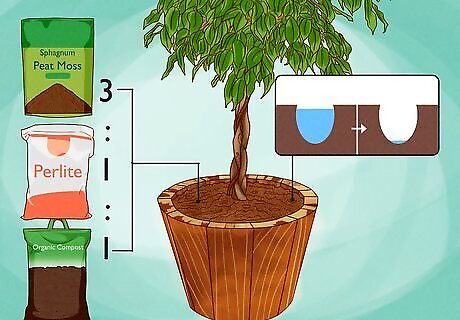
Use a soilless growing medium if possible. A mix of 3 parts peat moss, 1 part perlite, and 1 part compost will keep the soil well-drained while also retaining water for your ficus. Adding the compost into the pot will add nutrients to the mix as well. You can also use a well-draining potting soil if a soilless growing medium is unavailable.
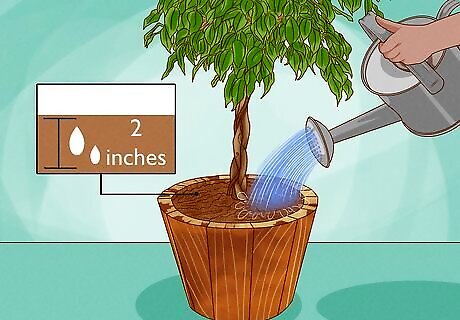
Water your ficus when the soil is dry 2 inches (5.1 cm) down. Overwatering is just as detrimental as under-watering a ficus. Both can cause the leaves on your tree to drop. Pour just enough water into the pot to seep through the drainage holes at the bottom. If the leaves fold easily, you may have overwatered your ficus. If the leaves are crinkly to the touch, they may be under-watered. Water less in the winter since there is less sun and temperatures are colder.
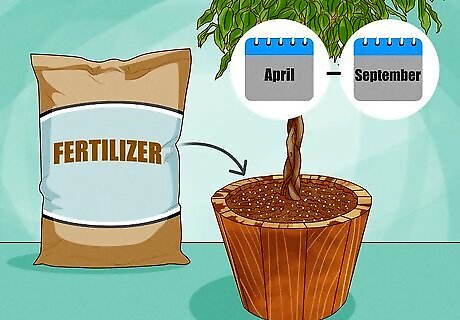
Apply fertilizer once a month between April and September. Fertilizer will promote your vegetation to grow throughout the season. The fertilizer should be diluted to half strength so it is not overpowering or harmful to your ficus. Follow the directions on the package to determine the amount of fertilizer to use with your size plant. When the days are shorter through the late fall and winter, don't fertilize your plant.
Cleaning Your Ficus
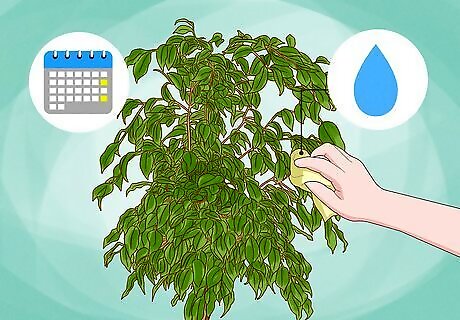
Wipe the leaves clean with a wet cloth to remove dust every 2 weeks. If you clean your tree often, the less build-up you'll have to clean later. Wet the cloth with either tap water or distilled water. Gently wipe the leaves of your ficus individually. Hold the leaf from underneath while you wipe them so they do not tear or rip off.
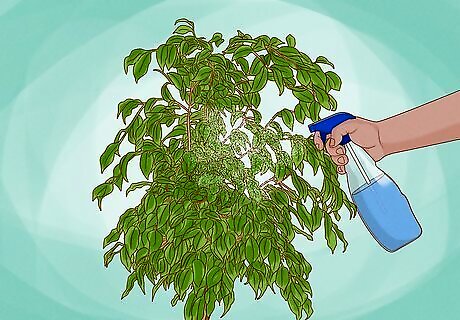
Mist the leaves with a spray bottle. If your leaves are smaller or more delicate, spray them thoroughly so they are covered with mist. If you want to, you can use a dry cloth to wipe the mist off the leaves to fully remove any dirt or dust. Mist the leaves every couple of days as the water evaporates. Leaving the mist on during the summer months will help control and maintain the humidity around your ficus.
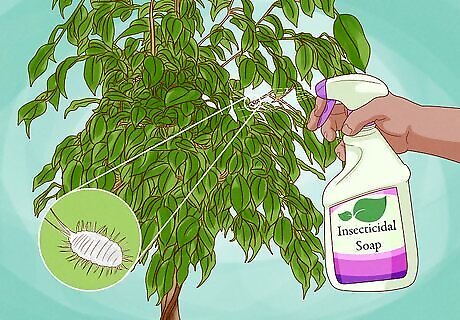
Wash your ficus with an insecticidal soap if household pests live on it. Ficuses attract many household pests like spider mites, mealy bugs, and thrips due to the moist and hot environment. If you notice any bugs on your tree, mix the soap with water in a spray bottle and thoroughly spray your ficus. Spray both the tops and bottoms of the leaves so you get full coverage of the area. If the insecticidal soap does not work, try using neem oil or other essential oils to deter or kill the bugs . In a case of severe infestation, it may be best just to throw away your plant.
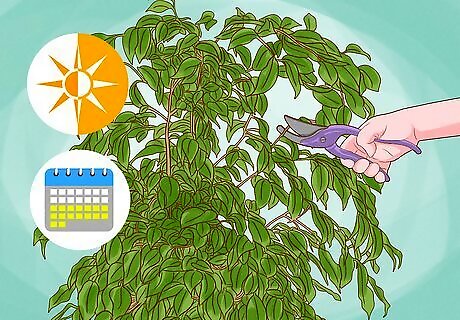
Prune branches and leaves with shears at the end of summer. Pruning is more than just cutting off the ends of branches. Make sure light is getting to the center of the tree so it can fully grow. Use pruning shears to cut off full branches where leaves are yellowing. Step away from your ficus often so you can see how you're shaping it. Do not remove more than ⅓ of the growth from the plant. The sap is irritating to the skin, so wear gloves as you prune.
















Comments
0 comment